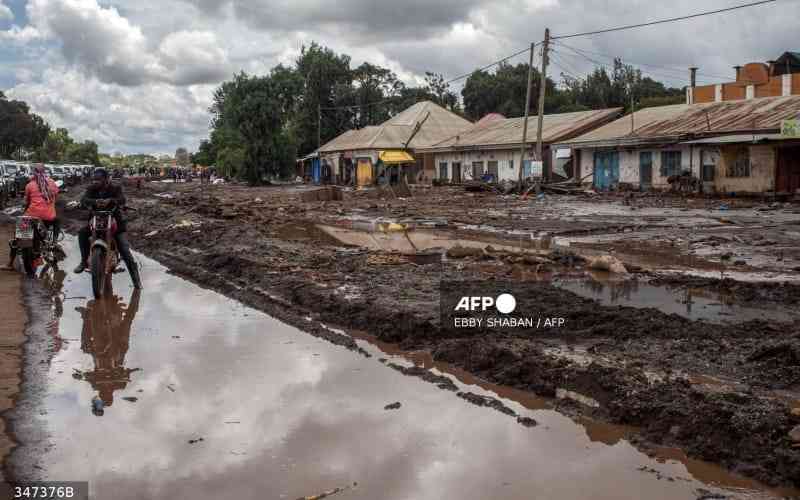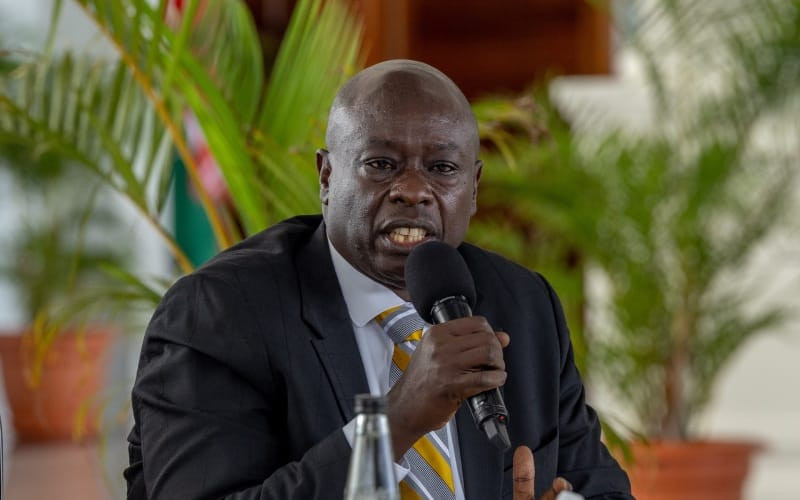Twenty-three is an iconic number in the world of sports. It was the number worn by Michael Jordan, widely regarded as the greatest ever basketball player.
But for us here in East Africa, it is a great number because this is the number of rivers that flow into Lake Victoria from Kenya, Tanzania, Burundi, Rwanda and Uganda.
Nyando River is one of the 23 that flows into Lake Victoria. This river starts its journey at Mau and Tinderet forests, which is an western extension of the Mau forest.
Over the years, both these forests have shrunk considerably as people kept converting forestland into farmland. Consequently, this deforestation has affected the quality and quantity of River Nyando’s water.
The resulting fluctuations in the river’s flow worsens floods during heavy rains like the ones currently being experienced. The results are disastrous. River Nyando recently broke its banks and left half of Ahero shopping centre and dozens of villages submerged.
At least one thousand people have been displaced. In the wider Kisumu County, Nyando floods have evicted 13,000 people from their homes.
Most of these people earn their living from farms whose produce was also swept away. Even more tragic, several people have lost their lives since December 2019 when floods started plummeting.
One ninety-four is the number of people who have been killed by floods in Kenya since April. This includes those who lost their lives in Nyando. As it leaves death and destruction in its trail, River Nyando is now flowing into a Lake Victoria whose water levels have risen by two metres. So extreme is this rise that some islands in the lake are now under threat of submersion. To address this water level rise, we need to revisit the dynamics that trigger such a sharp rise.
Eighty per cent. This is the percentage of Lake Victoria’s waters that come directly from rain. Only 20 per cent comes directly from rivers like Nyando and Kagera, which flows all the way from Burundi into Tanzania and Rwanda before ending its journey in Lake Victoria.
Numbers don’t lie
Because these rivers contribute to Lake Victoria’s water, their current flooded state is only partly to blame for the lake’s rising water levels.
Even the heavy rains, whose waters constitute most of the water inflow into the lake, are only partly to blame.
The real blame lies with us. Not just Kenyans, but East Africans and humanity as a whole.
If we want floods to cause much less damage next time heavy rains pound us, we must restore our critical natural resources and conserve them. As long as our water resources, transboundary ecosystems, biodiversity and forestry remain degraded, floods will keep assaulting us.
Four hundred thousand hectares is the approximate size of the Mau Forest Complex, the main catchment of rivers flowing into Lake Victoria.
Stay informed. Subscribe to our newsletter
As mentioned earlier, major deforestation has taken place in this complex over the years. We must restore Mau and all degraded Water Towers in the East Africa Region.
Such restoration will regenerate the health of River Nyando and all other rivers because they begin their journey in the forests that make up our Water.
Apart from forests, rivers also need our active conservation. This partly entails firm regulation of the pesticides and fertilizers that are used in our river basins.
Some of them contain chemicals that end up polluting our rivers. Polluted rivers defile the very wetlands that play a vital role in mitigating floods.
As a case in point, extensive farming in Nyando river basin has deposited a disproportionate amount of toxic chemical nutrients into River Nyando. This river also has to bear the brunt of heavy sedimentation occasioned by soil erosion.
This combination of sedimentation and toxic chemical nutrients affect the quality and quantity of its water, which affects Nyando wetland. It is no surprise then that the current floods found Nyando Wetland in a weakened state.
Floods should never be a death sentence or a destructive force.
If we restore our water towers, protect our water bodies, construct objects in accordance to the building code while respecting the riparian space as required, floods will never sweep away lives and property with such ferocious power.
This is the message of the rising waters of Lake Victoria to those who will care to think and act green!
- The writer is founder and chairperson, Green Africa Foundation. www.isaackalua.co.ke
 The Standard Group Plc is a
multi-media organization with investments in media platforms spanning newspaper
print operations, television, radio broadcasting, digital and online services. The
Standard Group is recognized as a leading multi-media house in Kenya with a key
influence in matters of national and international interest.
The Standard Group Plc is a
multi-media organization with investments in media platforms spanning newspaper
print operations, television, radio broadcasting, digital and online services. The
Standard Group is recognized as a leading multi-media house in Kenya with a key
influence in matters of national and international interest.
 The Standard Group Plc is a
multi-media organization with investments in media platforms spanning newspaper
print operations, television, radio broadcasting, digital and online services. The
Standard Group is recognized as a leading multi-media house in Kenya with a key
influence in matters of national and international interest.
The Standard Group Plc is a
multi-media organization with investments in media platforms spanning newspaper
print operations, television, radio broadcasting, digital and online services. The
Standard Group is recognized as a leading multi-media house in Kenya with a key
influence in matters of national and international interest.








